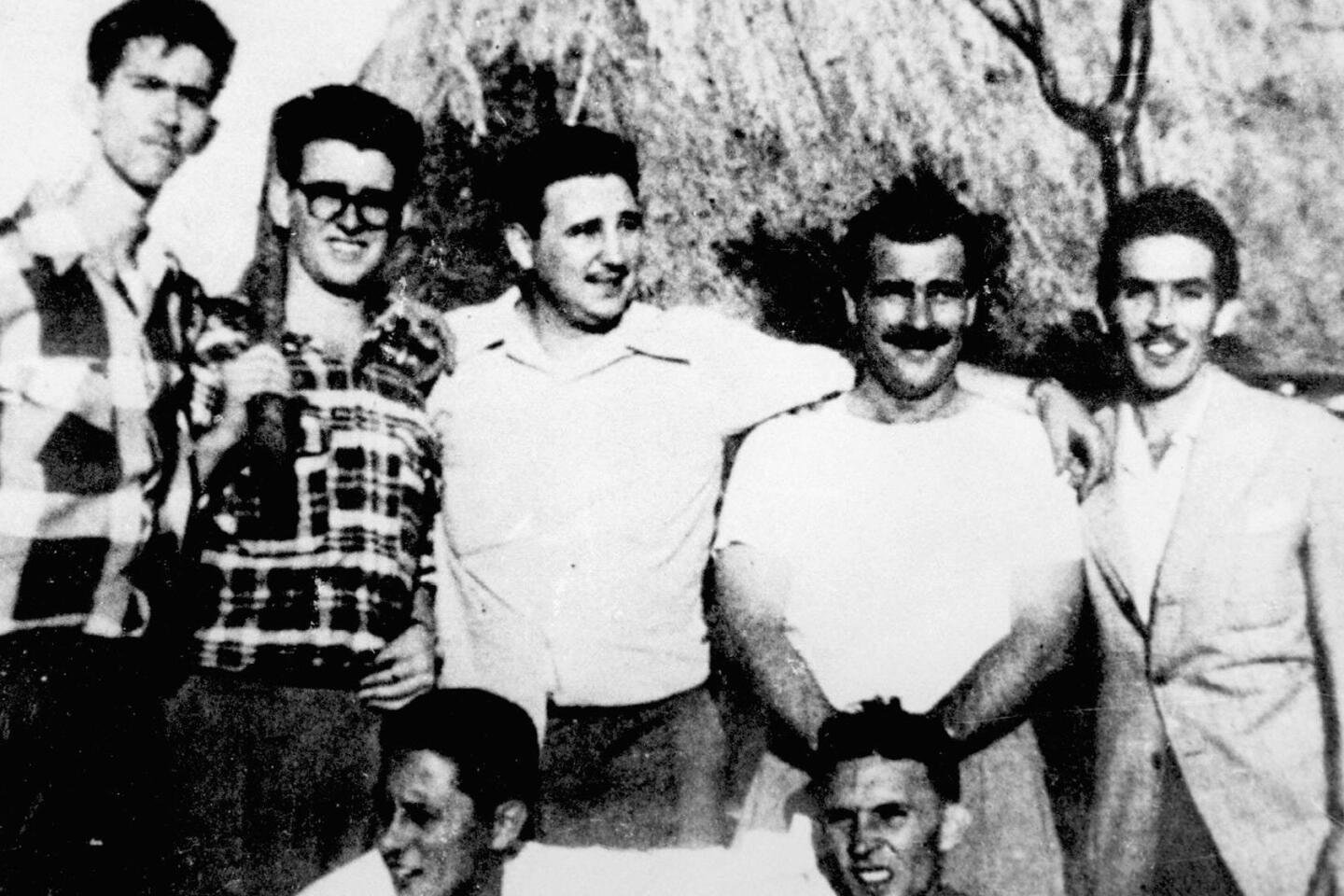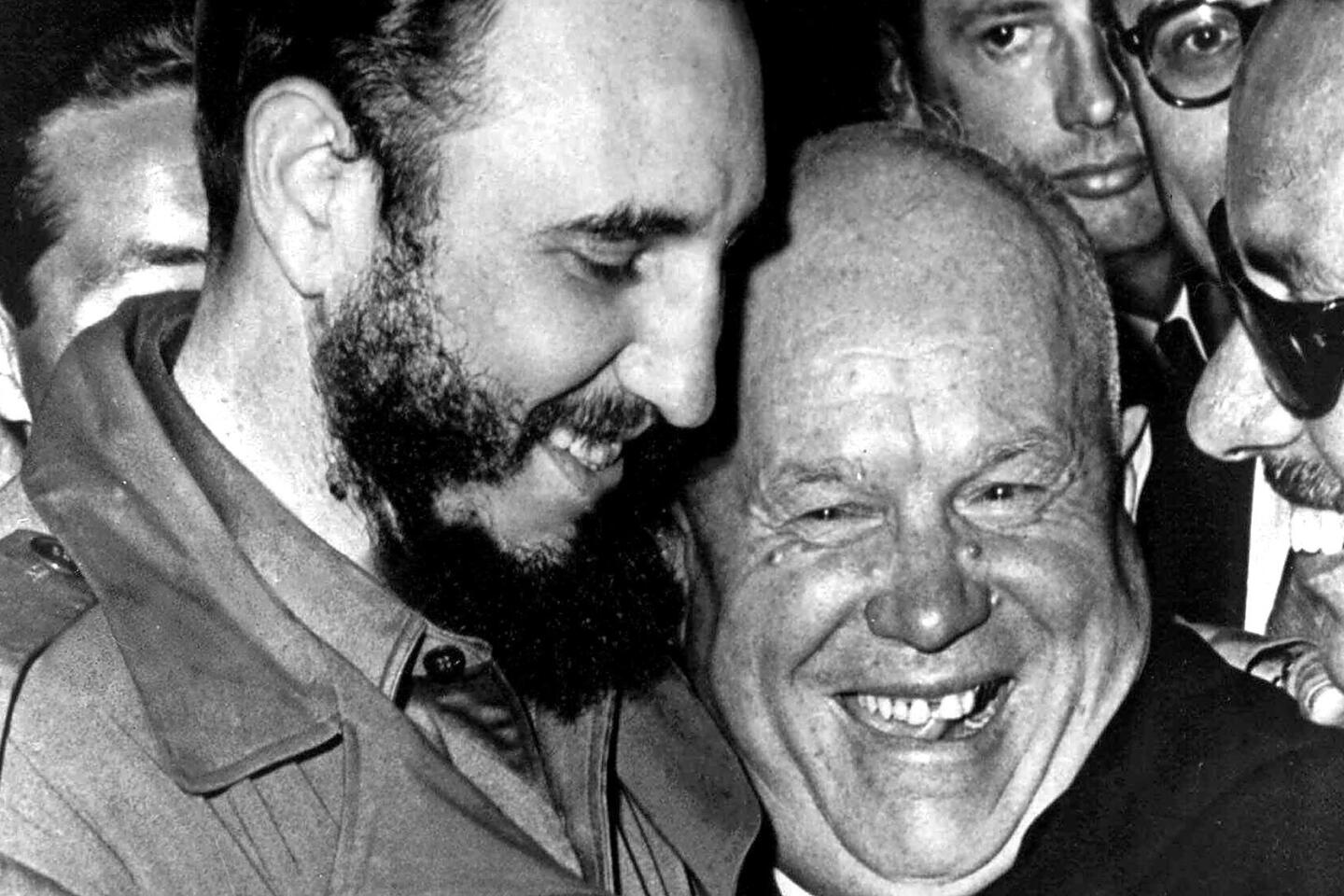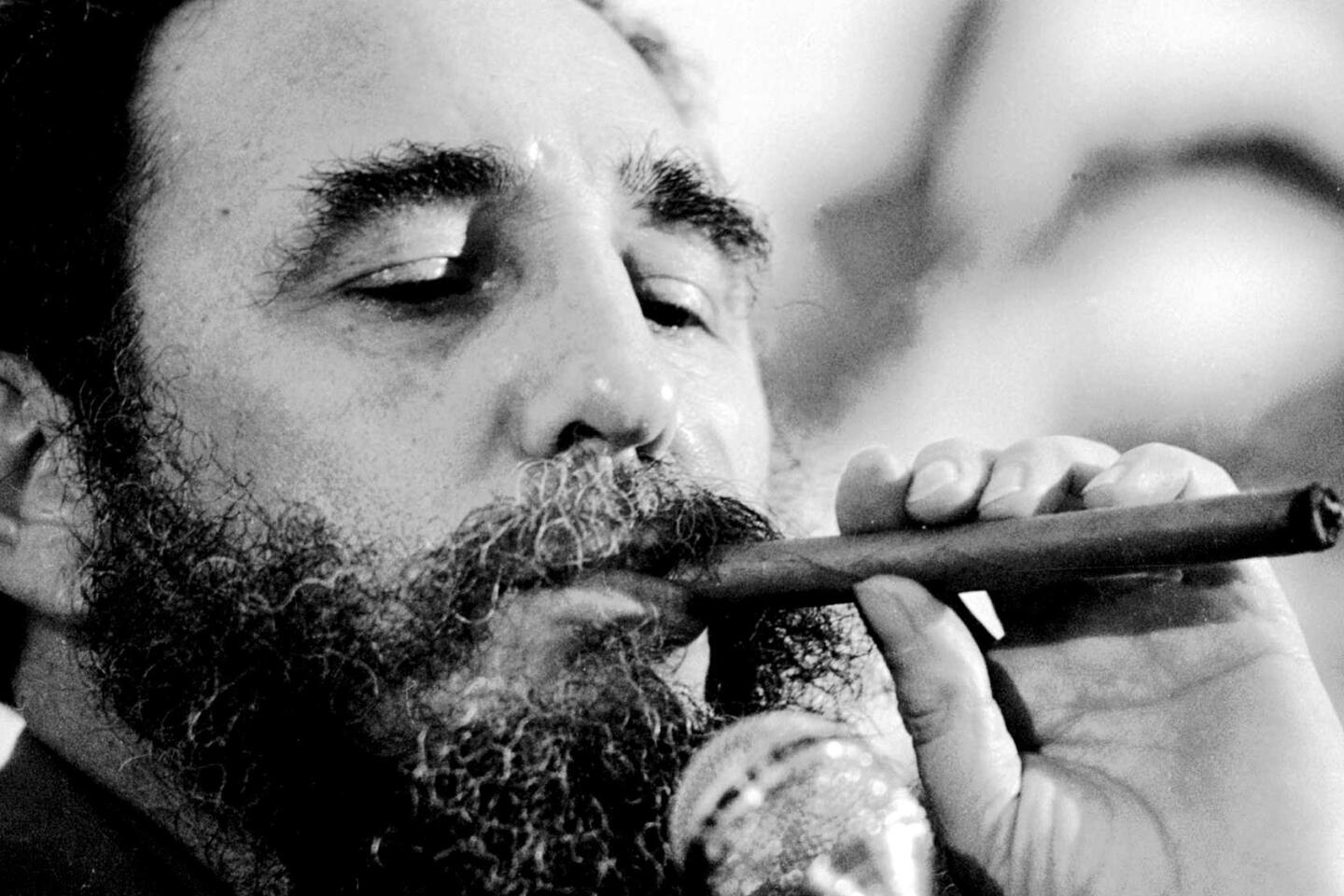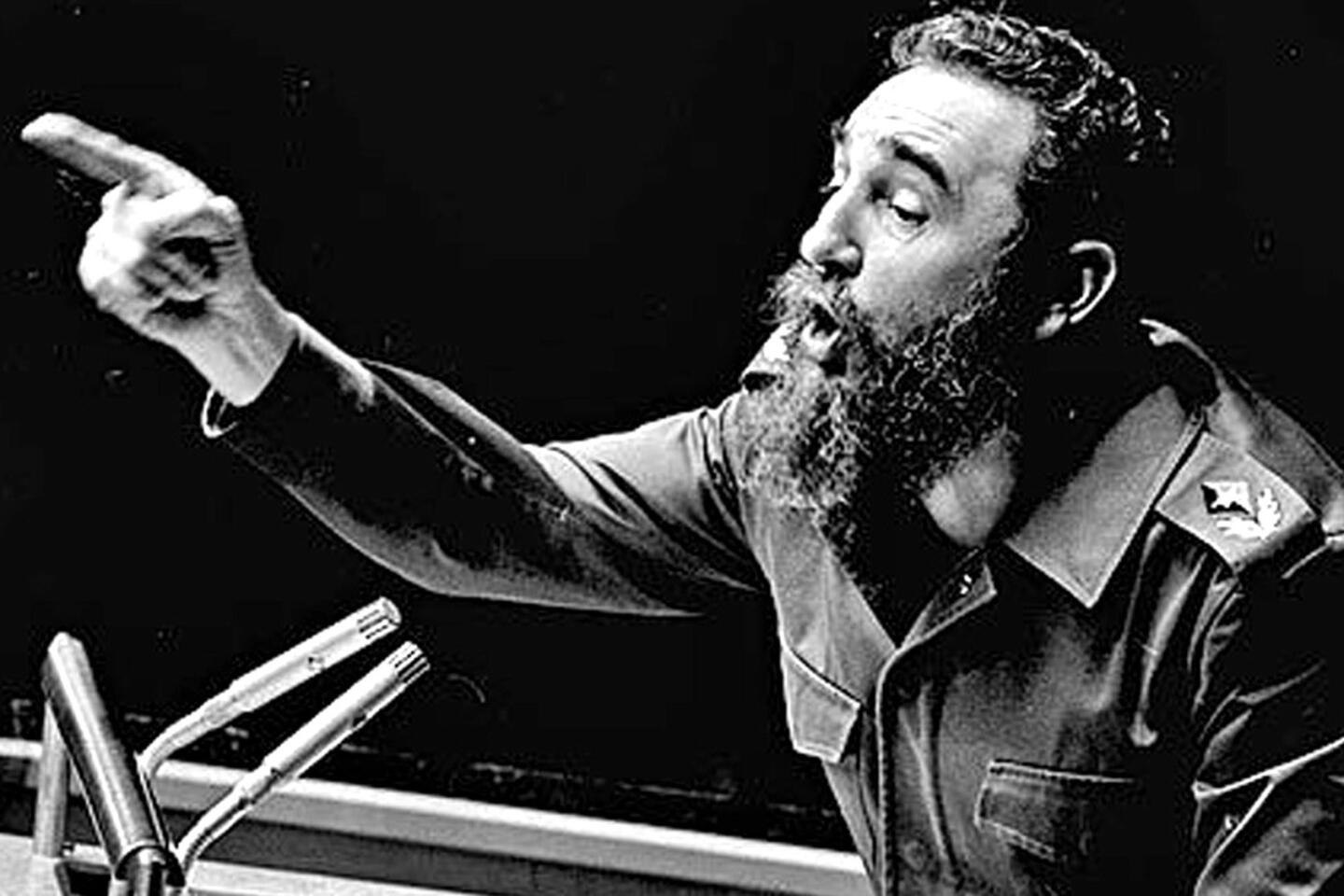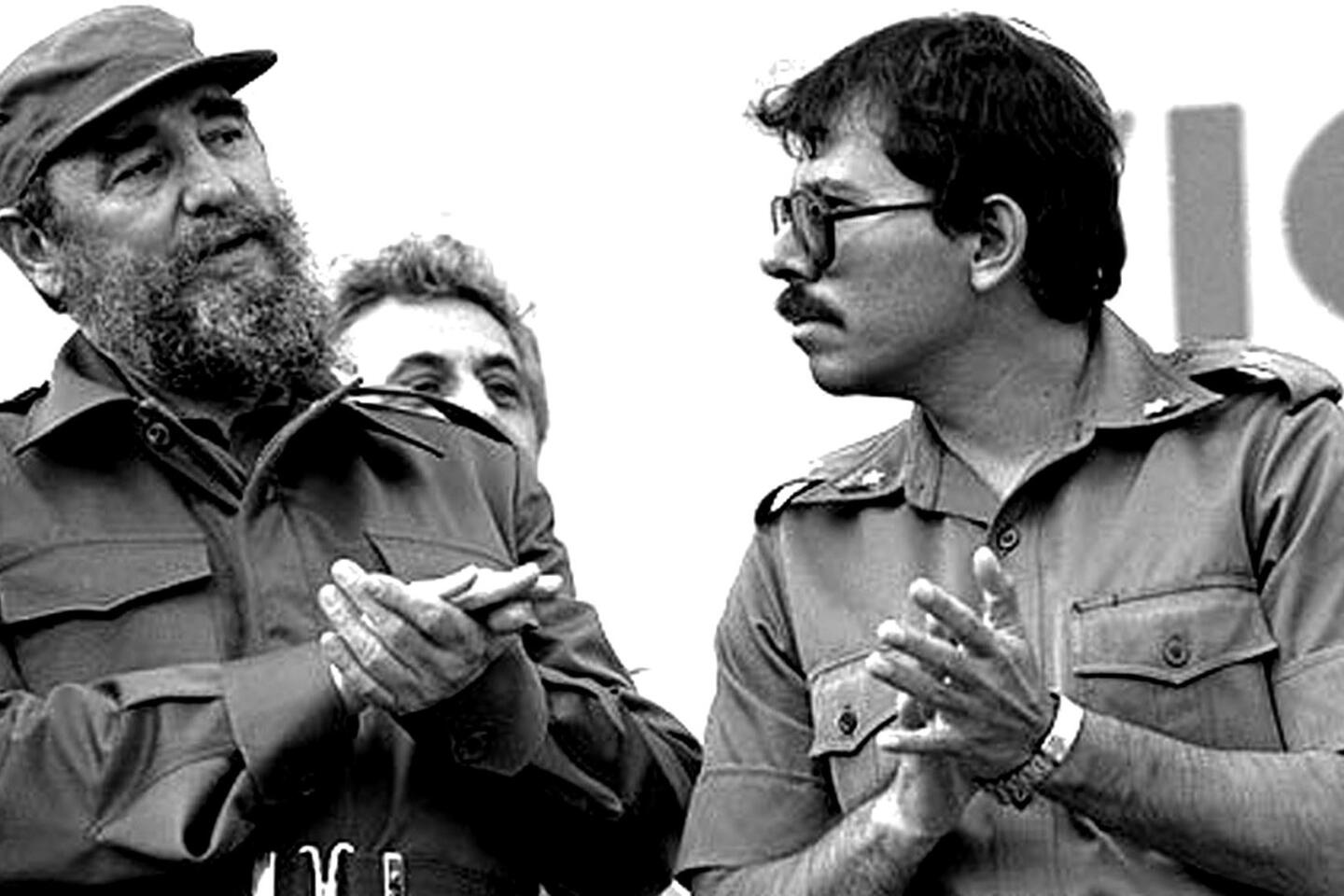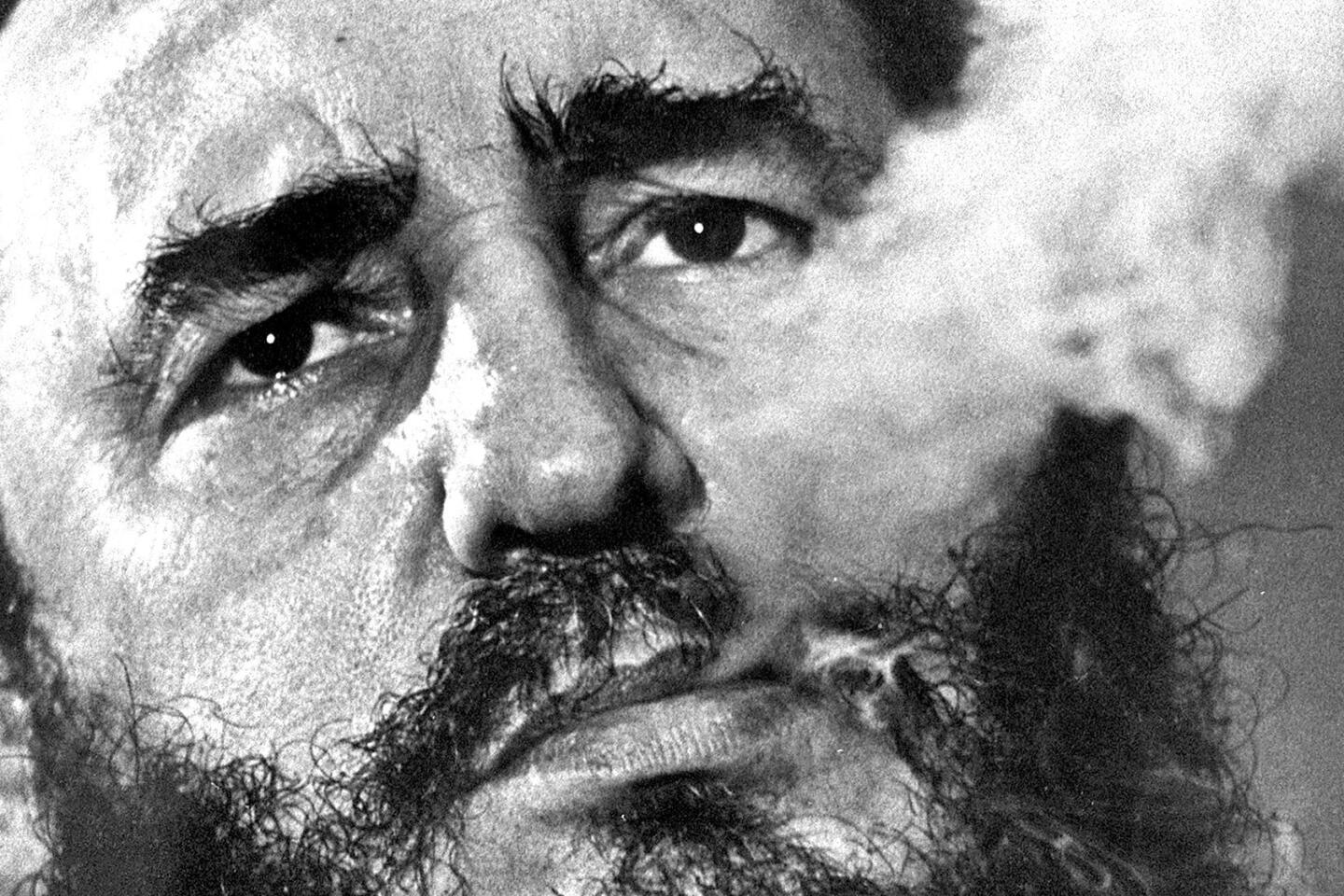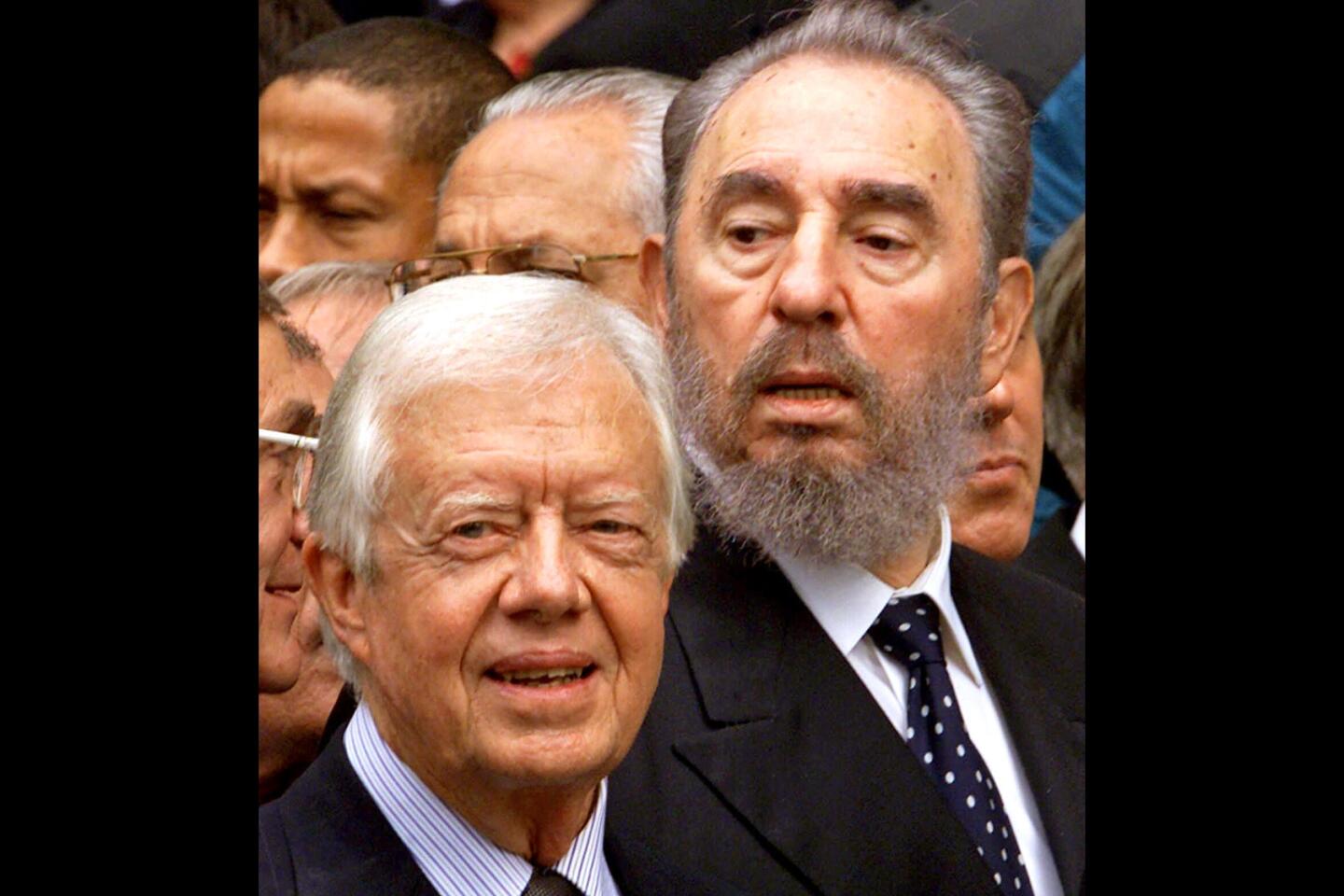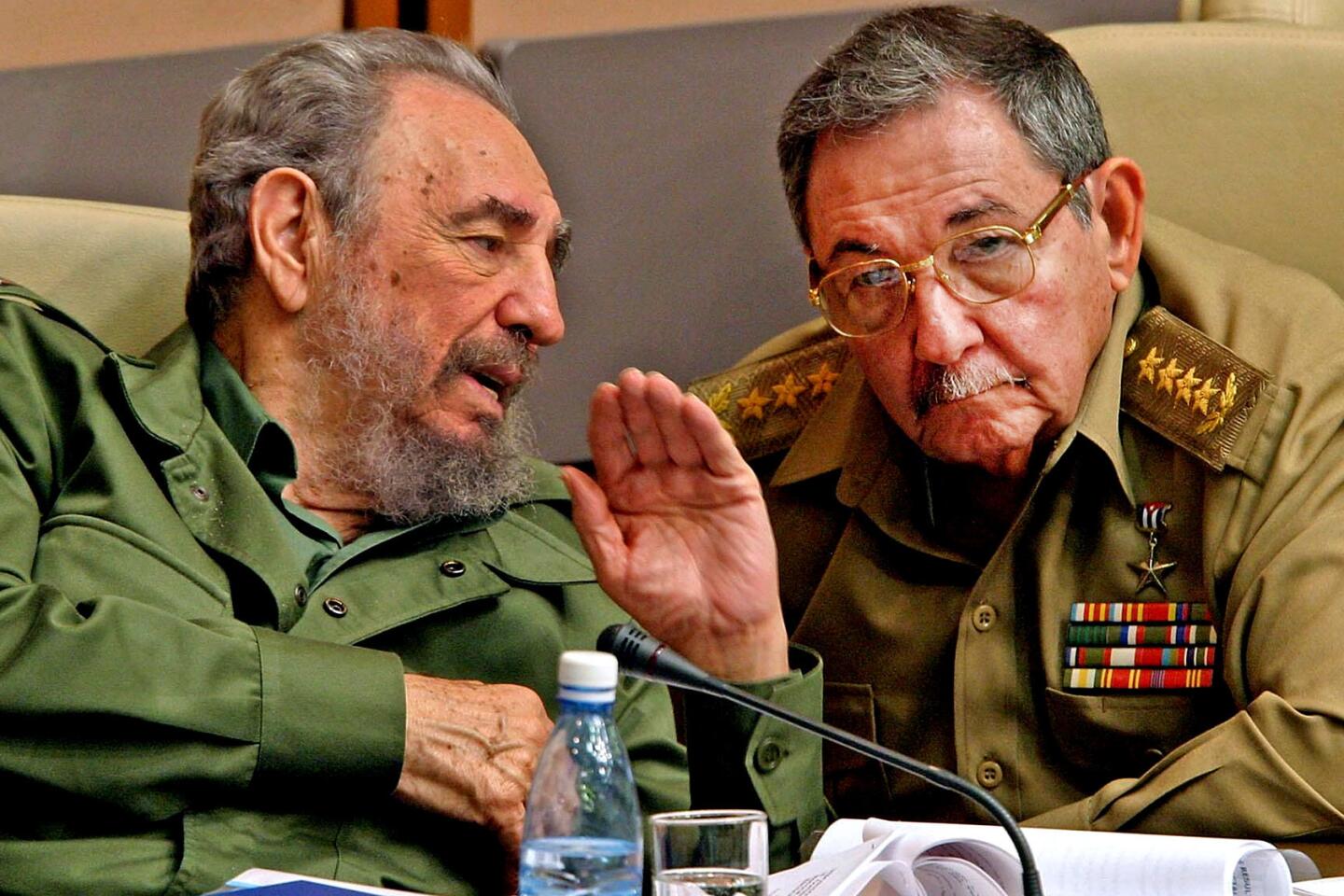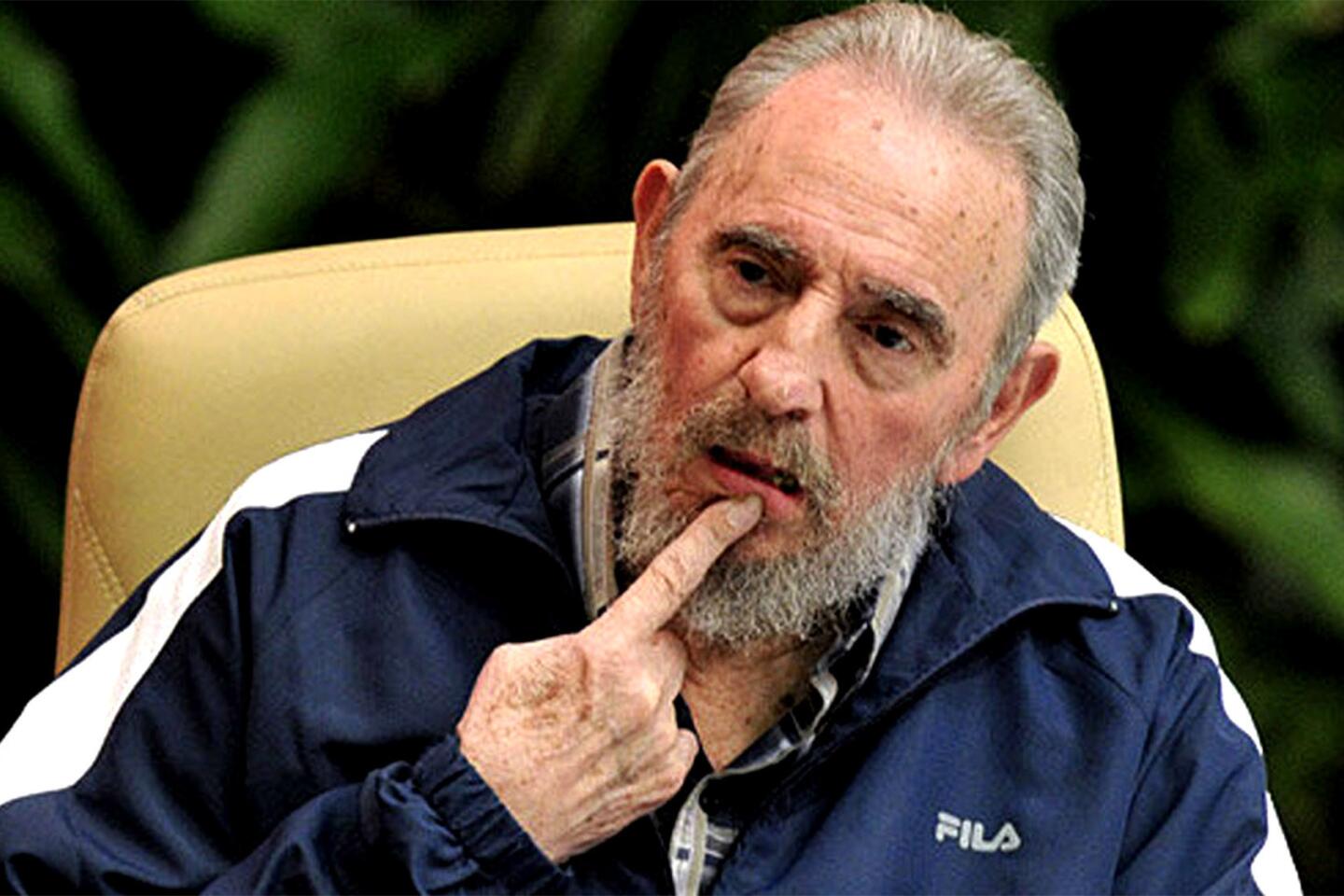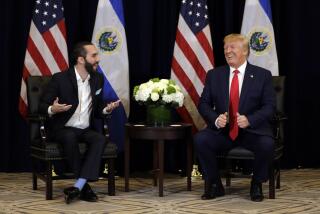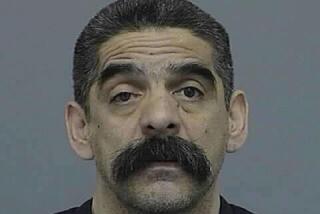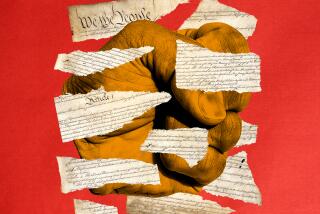Fidel Castro dead at 90: The revolutionary icon’s influence was felt far beyond Cuba
Former Cuban leader Fidel Castro, the charismatic icon of leftist revolution who thrust his Caribbean nation onto the world stage by provoking Cold War confrontation and defying U.S. policy through 11 administrations, has died. He was 90.
With his trademark fatigues and scruffy beard, Castro wore his defiance of Western capitalism like a badge of honor, accomplishing the unlikely feat of keeping communism alive in the Western Hemisphere two decades after the fall of the Soviet Union.
Castro was both bellicose and swashbuckling, a personality forged by prison, exile and revolution. But after early successes in healthcare and education, his government lost much of its luster in later years, as it failed to create economic opportunities and authorities resorted to repression to maintain control.
His last years were spent quietly as his brother Raul took the helm. The younger Castro launched cautious reforms in an effort to steer Cuba out of poverty, and in July 2015 restored diplomatic relations with the United States after a half-century breach.
For decades, however, Fidel Castro outmaneuvered his powerful neighbor to the north, coming out on top in the Bay of Pigs invasion in 1961, the Mariel boatlift in 1980 and the bitter custody battle over young castaway Elian Gonzalez in 2000. He survived bizarre assassination plots, and his government’s challenge to Washington brought on decades of withering sanctions and a diplomatic freeze.
Castro’s revolution touched off an exodus, and the thousands of Cubans who reached Florida forever changed the character, culture and politics of the state. Miami became the center of the expatriate community, where many were convinced for years they could return home when he died.
The years became decades, and news of Castro’s death touched off noisy celebrations in Florida, especially Miami, early Saturday morning. A large crowd gathered outside the famous Versailles restaurant in Little Havana, heart of Miami’s Cuban community, and videos shared over social media showed people cheering, shouting, honking horns and beating on cowbells.
The website of Diario Las Americas, a Spanish-language newspaper in Florida, declared in bold type: “The Cuban Dictator Dies.”
Castro, the longest-reigning of the 20th century caudillos — Latin American military rulers — blamed the U.S. economic blockade, not his government’s communist economics, for the steady erosion of living standards in Cuba.
While a succession of U.S. presidents and hard-line Cuban exiles in Miami saw a dictator who trampled on the rights of his people, Castro won acclaim among Latin Americans who envied his nationalist dignity and cavalier attitude toward the powerful yanquis.
“No sober person in Latin America wants to adopt the Cuban system. But wherever he went in Latin America he received a raving ovation,” said Wayne Smith, a veteran U.S. diplomat who served in Havana. “Why? Because he stood up to the United States, told us where to go, and got away with it.”
That stance against U.S. domination propelled Castro to the forefront of Latin America’s quest for social justice throughout the politically charged decades that followed World War II.
But he squandered many gains of his revolution by refusing to ease his grip on power or the economy.
Castro ruled over a country less populous than some Latin American cities, yet he touched politics and development around the globe. He aided revolutionaries from Nicaragua to Angola, supported leftists such as Chile’s Salvador Allende and Grenada’s Maurice Bishop, fomented unrest against hard-line conservatives in Venezuela and Argentina and kept allies in power in Mozambique.
Ann Louise Bardach, who wrote the 2002 book “Cuba Confidential,” said in an interview that Castro in effect won the protracted battle with Washington by virtue of his survival in office, but lost the war on poverty and injustice because of his refusal to address Cubans’ hunger for democratic and economic reforms.
“Castro,” she wrote in the book, “has the discipline of a warrior, the intellect of a chess master, the obsessive mania of a paranoiac and the willfulness of an infant.”
::
Fidel Alejandro Castro Ruz was born Aug. 13, 1926, in the village of Biran in eastern Cuba, out of wedlock to a prosperous Spanish immigrant, Angel Maria Bautista Castro Arguiz, and the servant he had taken as a mistress, Lina Ruz. His father had two older children by his first wife and seven with Ruz.
Wherever he went in Latin America he received a raving ovation. Why? Because he stood up to the United States, told us where to go, and got away with it.
— Wayne Smith, a veteran U.S. diplomat who served in Havana
Some biographers say Castro was haunted by the circumstances of his birth; never christened, he was teased by neighborhood children as “the Jew” and was barred from a Roman Catholic elementary school near home, forcing his exile to a boarding school.
Castro attended a Jesuit academy before studying law at the University of Havana, where he delved into both sports and politics. Tall and powerful, he was a champion basketball player and equally able in baseball, and he was also said to possess prodigious powers of intellect and memory.
Resentful of U.S. backing of corrupt leaders and ownership of exploitative factories and plantations in Cuba, Castro began plotting revolution while still a student, and he found solidarity with leftist student activists throughout the region.
In 1948, Castro married philosophy student Mirta Diaz-Balart; on Sept. 1, 1949, she gave birth to a son named for his father but known throughout his life as Fidelito — little Fidel. Castro’s wife divorced him a few years later while he was in prison, and he acknowledged in interviews having fathered as many as 15 children.
Castro earned his law degree in 1950, and in 1952 planned to run for a parliamentary seat. But the election was canceled after military chief Fulgencio Batista, in a return to power, overthrew the government and imposed a right-wing dictatorship.
::
Capitalizing on the Batista government’s unpopularity, Castro organized a revolutionary movement. He had drawn scarcely more than 100 followers to the cause when he led them in an attack on the Moncada military barracks in Santiago de Cuba on July 26, 1953. The assault failed miserably, leaving several dozen of the early revolutionaries dead and scattering the survivors to the mountains of the Sierra Maestra, where they were tracked down and arrested.
Castro drew a 15-year sentence, but was released after two years in a general amnesty and went to Mexico. There, he met an enigmatic, newly graduated Argentine physician with a utopian vision of liberation through armed struggle, Ernesto “Che” Guevara.
Jorge Castañeda, former Mexican foreign minister, chronicled the relationship in his 1997 book, “Compañero: The Life and Death of Che Guevara.”
“Fidel’s passion for Cuba and Guevara’s revolutionary ideas ignited each other like wildfire, in an intense flare of light. One was impulsive, the other thoughtful; one emotional and optimistic, the other cold and skeptical. Without Ernesto Guevara, Fidel Castro might never have become a communist. Without Fidel Castro, Ernesto Guevara might never have been more than a Marxist theoretician, an idealistic intellectual,” Castañeda wrote.
In his biography of Guevara, also published in 1997, Jon Lee Anderson wrote that Castro and Guevara were both spoiled favored sons “imbued with Latin machismo: believers in the innate weakness of women, contemptuous of homosexuals, and admirers of brave men of action. Both were possessed of an iron will and imbued with a larger-than-life sense of purpose.”
Castro, Che and 80 followers left for Cuba on Nov. 25, 1956, aboard the yacht Granma.
When they arrived, the guerrillas took to the mountains, where they organized, trained, recruited and waged a propaganda campaign aimed at intimidating by vastly overstating their numbers and clout.
Frequently short on food and water, the rebels gave up the nuisance of shaving. They became known as los barbudos — the bearded ones — and Castro retained his most distinctive feature throughout his lifetime.
The revolutionaries waged a two-year campaign of harassment, ambushing columns of troops and taking several small towns before surrounding Santiago in late 1958. Batista fled to the Dominican Republic as the new year arrived.
A jubilant Castro proclaimed victory New Year’s morning and spent weeks in triumphant processions throughout the country, cheered by the masses as he thundered through the streets atop the trucks and armored vehicles of a military force now his.
Castro was masterful amid the people, glad-handing flocks of supporters and pumping up nationalist energies. In his signature practice of “direct democracy,” he would rile up a crowd, getting them to chant for an action he had in mind all along, but presenting it as his bowing before the will of the people.
::
Initially, Castro also found acclaim on the international stage. He charmed journalists and socialites that April during his visit to New York and Washington, though President Eisenhower declined to receive him.
A year and a half later, he addressed the United Nations as the recognized leader of his country, upstaging the more dour heads of state with his witty media banter. He emerged as the star attraction, despite a speech that ran more than four hours and U.S. officials’ efforts to isolate him.
Eisenhower slapped a trade embargo on Cuba in October 1960 and severed relations with Havana three months later.
Countless biographers, interviewers and political scientists contend that Washington’s rejection of Castro, encouraged by Batista supporters who had fled to the United States and whose homes and businesses in Cuba had been seized, pushed him toward authoritarianism and into the arms of the Soviet Union.
“The Americans made it impossible for reformers to get any traction, which enforced the role of Che and the radicals,” said Julia E. Sweig, director of Latin American studies at the Council on Foreign Relations. “The Soviet Union became a lifeline because we cut them off economically. It didn’t have to go that way.”
It wasn’t until the eve of the Bay of Pigs invasion, more than two years after he took power, that Castro proclaimed himself a Marxist-Leninist and began steering his country in Moscow’s wake.
The April 1961 invasion was Castro’s legend-making defeat of the U.S. Goliath, after 1,400 invading exiles deposited on Cuban shores by the U.S. Navy were quickly overwhelmed by his determined fighters. The attack served to convince Cubans that the United States bore them ill will, allowing Castro to consolidate power and cast himself as defender of an endangered nation.
Beholden to Moscow for aid and fearful of another U.S. attack, Castro allowed the Soviet military to install medium-range missiles on Cuban territory in 1962, instigating a high-stakes showdown between the Cold War superpowers that brought the world to the brink of a nuclear war.
During the Cuban missile crisis that October, probably his country’s most stunning moment in the international spotlight, Castro was said to have become enraged when Soviet and U.S. officials negotiated an end to the standoff without his participation.
::
In the name of the Cuban people, Castro nationalized industrial assets across the country, infuriating sugar, rum and cigar czars and laying the foundation for decades of economic conflict with the United States and the dispossessed exiles who fled there.
Cuban exiles in Florida and New Jersey were largely responsible for keeping the sanctions on Cuba. Some also were tied to acts of terrorism against Cuba, including the 1976 bombing of a Cubana Airlines jet in which all 73 on board were killed.
In April 1980, Castro showed his skill at turning defeat into victory by using a refugee crisis, when 10,000 Cubans seeking to flee the island flooded the Peruvian Embassy in Havana. Castro said the asylum-seekers were free to leave from the port of Mariel, and in the chaotic exodus that ensued, he emptied prisons and mental hospitals and sent the inmates to join the flotilla.
Through his defense minister and brother, Raul, Castro trained and augmented leftist guerrillas around the world starting in the 1970s. At least 2,000 troops died serving their “internationalist” duty, mostly in Angola, and estimates of the true Cuban toll in foreign struggles — a figure never officially disclosed — exceed 10,000.
Although Castro’s forces bested the Bay of Pigs invaders, U.S. troops prevailed in the 1983 clash on the tiny Caribbean island of Grenada, the only time the two armies have fought.
The collapse of the Soviet Union in 1991 and the loss of the $6 billion in annual subsidies Moscow had provided Cuba eventually forced Castro to call home his troops.
Despite economic problems, Cuba made impressive progress in literacy, higher education and healthcare during Castro’s reign.
University enrollment was higher than in many more prosperous countries. Castro’s “literacy brigades” helped lift the quality of life in the countryside. Infant mortality and life expectancy also improved dramatically and are now equal with those of the United States.
Though never clearly embracing the atheism espoused by most communist leaders, Castro banned public celebrations of Christmas until Pope John Paul II made reversal of that order a condition of his historic 1998 visit.
After the Soviet Union’s dissolution and an abrupt end to Moscow’s subsidies to Cuba, Castro agreed to allow some minor economic liberalization to attract foreign investment.
Cuban state companies collaborated with Canadian, Japanese and European counterparts to create a thriving tourism sector on the tropical island, undermining the U.S. embargo. The U.S. government put up barriers to its business community’s investment in Cuba — what increasing numbers of agricultural traders and others lamented as missed opportunity in recent years.
But other parts of the economy felt the effects of the end of the Cold War keenly. Once reliant on plentiful Soviet oil, Cuba turned to Venezuela, which became its key trading partner, providing half of its oil needs on preferential terms. A slump in sugar sales and wildly fluctuating worldwide prices for nickel also hurt.
Hundreds of thousands of Cubans with relatives abroad were able to sustain themselves through the estimated $1 billion in remittances coming to the island each year.
::
On Thanksgiving Day in 1999, a 5-year-old Cuban boy named Elian Gonzalez was found off the coast of Florida’s shore, one of only three survivors of an ill-fated escape in which his mother and 10 others drowned. The subsequent custody battle between Elian’s anti-Castro relatives in Miami and the Cuban government ultimately gave Castro a platform to bolster his image as protector of Cuban sovereignty and dignity in the face of Yankee aggression.
U.S.-Cuban tensions seemed to be easing when, in 2003, the Cuban government jailed 75 dissidents pushing for democratic reforms. The last of them were finally released in 2011.
In his later years, Castro appeared increasingly frail. It was his hectic travel schedule in July 2006 that he blamed for the intestinal bleeding that led to surgery and compelled the first transfer of governing authority, to brother Raul, in the more than 47 years he had ruled the country.
And it would be years before he reappeared in public, his illness and long convalescence even forcing him to miss the 50th anniversary celebrations of the revolution on New Year’s Day 2009.
Instead, Castro expressed his thoughts in columns he purportedly penned and regularly published in the Cuban press and on the Internet, under the title “Reflections.” He wrote at length on themes including U.S. politics and a looming nuclear holocaust until the last few years of his life.
But in April he rallied enough to surprise the country with a surprise speech at the Communist Party Congress in Havana.
As Fidel Castro’s official role faded (he relinquished his last leadership post, as head of the Communist Party, in April 2011), Raul consolidated his own power and embarked on a reform program that would have been unthinkable under his brother. The changes included allowing Cubans to buy and sell cars and homes, to open small businesses and to leave the country without first applying for government permission.
On Dec. 17, 2014, Raul Castro and President Obama announced a stunning turnaround in U.S.-Cuban relations with their promise to restore diplomatic ties and bring the two nations into a more congenial relationship. An end to the U.S. embargo of Cuba, however, depends on action by Congress, where much opposition remains to normalizing relations with Havana as long as any Castro is in power.
In March, Obama became the first U.S. leader in nearly 90 years to visit the island nation, and in October he lifted several trade restrictions, a move that included an end to limits on the Cuban cigars Americans can bring home. Administration officials said at the time that the Obama was using the new rules to expand and solidify its opening to Cuba before Obama leaves the White House in January.
Castro did not publicly comment on the warming relations between the U.S. and Cuba, but this year did take swipes at his old rival.
He wasn’t impressed when Obama, in a television address to the Cuban people during his visit, struck a conciliatory tone, saying the two countries “can make this journey as friends, and as neighbors and as a family — together.”
In a long written response, Castro said Cubans could provide for themselves.
“We do not need the empire to give us anything,” he spat.
In another long letter released as Cubans marked his 90th birthday in August, Castro criticized Obama again for a speech the U.S. president had given months earlier during a visit to Japan. Castro’s complaint: Obama failed to apologize for the U.S. bombing of Hiroshima and Nagasaki in World War II.
The former leader, long criticized for abusing human rights, wrote: “I believe that the United States’ president’s speech lacked stature when he visited Japan, and it lacked an apology for the killing of hundreds of thousands of people in Hiroshima, in spite of the fact that they knew the effects of the bomb.”
To the end, Castro clung to his belief that his revolution had succeeded in lifting a nation above self-interest and material obsessions.
His words to the court that tried him for the Moncada attack more than half a century ago echoed throughout his long career and late-night monologues. “Judgment is spoken by the eternal court of history,” Castro said then of his actions. “Condemn me, it does not matter. History will absolve me.”
Besides Raul, his survivors include his longtime partner, Dalia Soto del Valle, son Fidelito, former mistress Naty Revuelta, two daughters and six other sons — five born of Soto del Valle.
Los Angeles Times staff writer Tracy Wilkinson contributed to this report.
MORE ON FIDEL CASTRO
Obama’s Cuba visit to augur a ‘new beginning’ between nations
Former president Fidel Castro appears in public in Cuba
Pope meets Fidel Castro after delivering jab against communist system
Fidel Castro marks his 90th birthday with a letter, thanking Cuba and criticizing Obama
UPDATES:
11:35 p.m.: Updated with reaction from Florida.
11:10 p.m.: Updated with Castro’s criticisms of President Obama.
9:45-10:30 p.m.: Updated with the latest information about U.S.-Cuba relations.
This obituary was originally published at 9:40 p.m.
More to Read
Start your day right
Sign up for Essential California for the L.A. Times biggest news, features and recommendations in your inbox six days a week.
You may occasionally receive promotional content from the Los Angeles Times.
